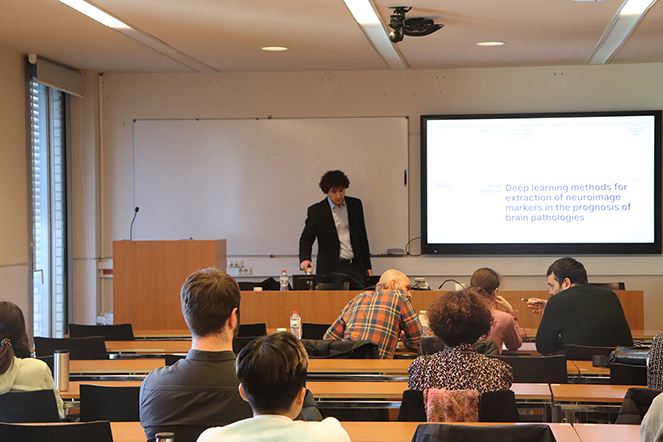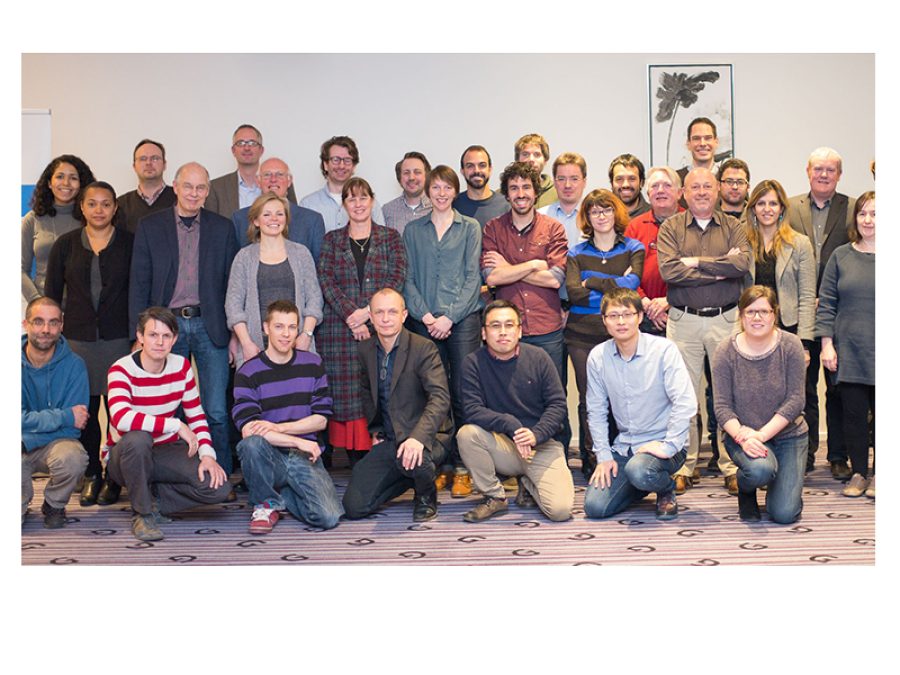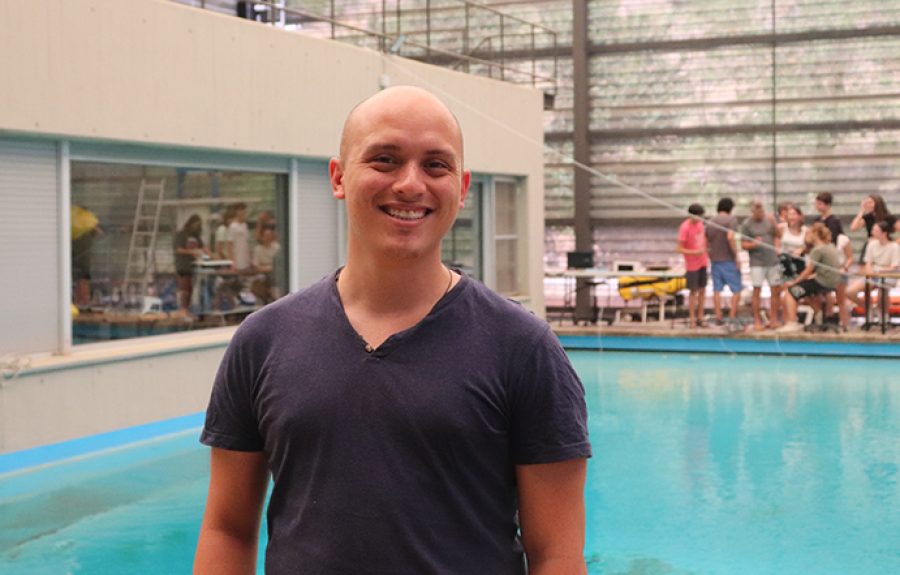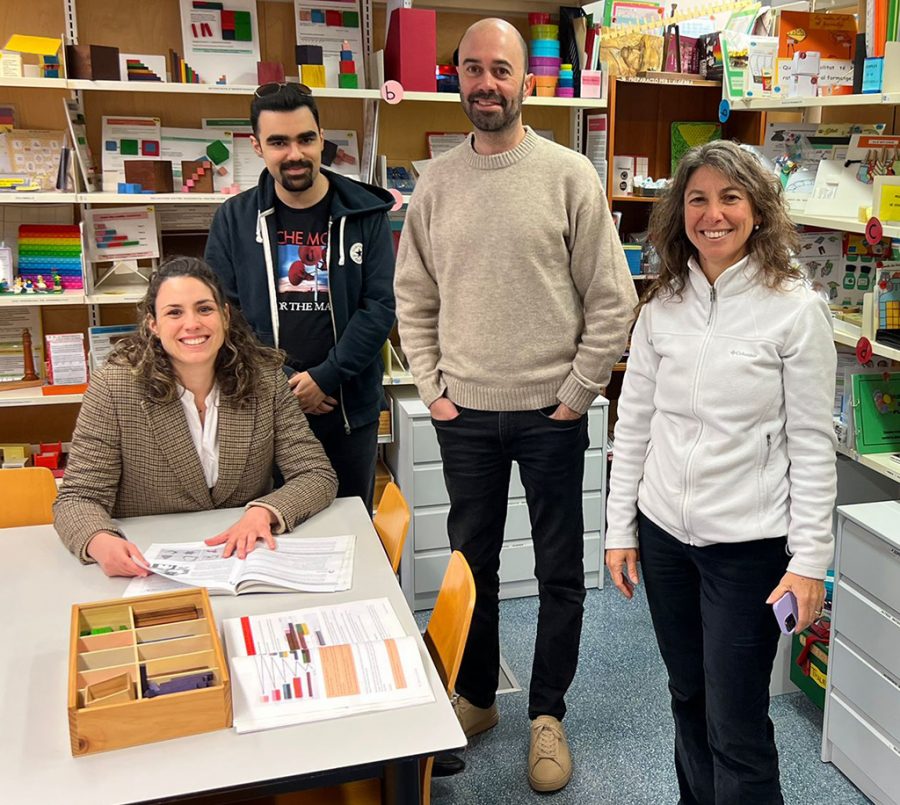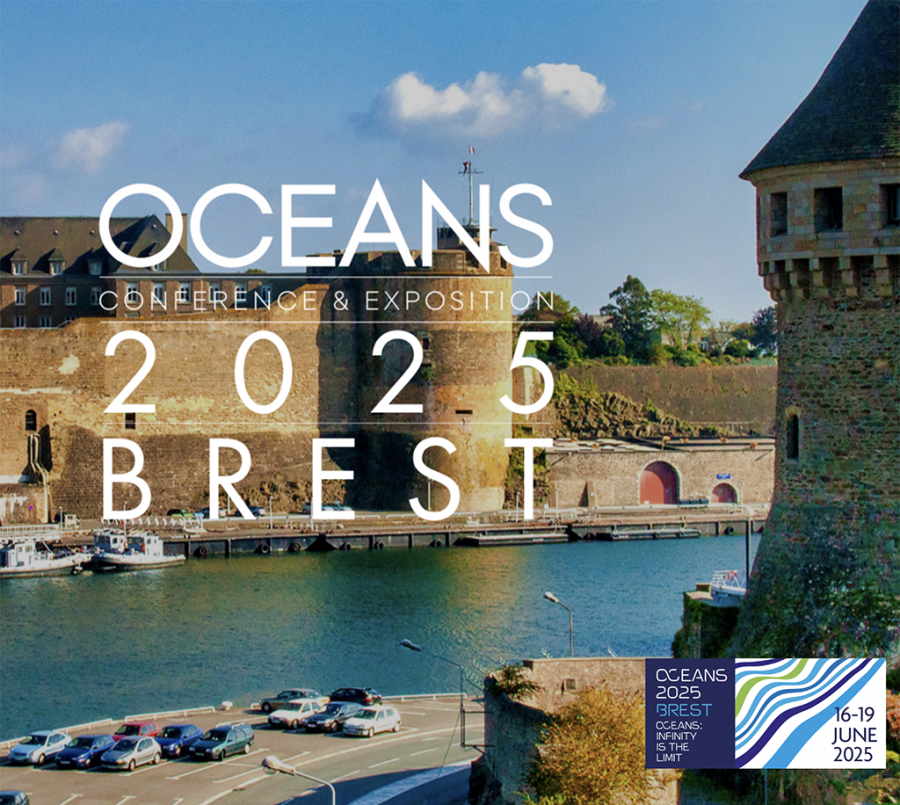By Albert Clèrigues Garcia
Supervised by Dr. Xavier Lladó / Dr. Arnau Oliver / Dr. Sergi Valverde
Abstract
This PhD thesis focuses on improving the extraction of neuroimage markers for the prognosis and outcome prediction of neurological pathologies such as ischemic stroke, Alzheimer’s disease (AD) and multiple sclerosis (MS). Our work has been developed on two of the most relevant neuroimage markers for diagnosis and prediction, brain lesion segmentation and longitudinal atrophy quantification. Brain lesion segmentation can be directly used in MS and ischemic stroke as a prognostic marker and can also be useful for other downstream segmentation tasks. In MS, disease activity produces very characteristic lesions which can help with diagnosis and prognosis of the pathology. In ischemic stroke, lesion segmentation can inform the treatment decision workflow by quantifying the amount of tissue that could be salvaged against the risks of surgical intervention. We also tackle in this PhD thesis the task of brain tissue segmentation for longitudinal atrophy quantification, a validated prognostic image marker in MS and AD. Measurements of longitudinal atrophy can be used to assess the rate of disease progression and might even help to predict AD onset years in advance. In MS patients, an accelerated rate of brain atrophy is also observed as a result of disease activity and is used as a prognostic marker and to evaluate the response of disease-modifying treatments.
The work in this thesis has been developed in several stages. In stage one, we approach the task of brain lesion segmentation and propose two patch-based deep learning methods for ischemic stroke, a 2D approach for computed tomography (CT) images and a 3D one for magnetic resonance imaging (MRI). Within both of these approaches, we have proposed training patch sampling techniques along with class balancing loss functions to mitigate the imbalance between healthy and lesion classes. We have also explored the use of several post-processing techniques to rectify the classification confidence of the model and filter lesions based on its morphology. Additionally, we have proposed a novel technique to exploit features based on the bilateral symmetry between brain hemispheres. The proposed approaches have shown state-of-the-art performance on two well-known publicly available datasets from the 2015 and 2018 editions of the Ischemic Stroke Lesion Segmentation (ISLES) challenge.
In the subsequent stages of this thesis, we focused on brain tissue segmentation for cross-sectional and longitudinal volumetric analysis. Although deep learning techniques have been at the forefront of many recent breakthroughs, current state- of-the-art methods for brain tissue segmentation have still not found a way to benefit from them. The main issue preventing their application is that the typically employed supervised deep learning methods would require accurate manual mea- surements of brain volumetry, which are virtually impossible to perform by human raters. Thus, we propose an unsupervised patch-based deep learning framework designed for accurate brain tissue segmentation which does not rely on manual annotations for training. Instead, we learn from the outputs of a reference classical segmentation method and use data-driven techniques to improve upon their results and compensate its shortcomings. This unsupervised brain tissue segmentation framework is used as the basis for the work performed in the next stages.
Although the effect of WM lesions typically observed in MS patient images has been extensively studied in classical brain tissue segmentation methods, it has still not been evaluated within the more recent deep learning based approaches. In this regard, we begin by studying and evaluating the error that is introduced by WM lesions in our deep learning based tissue segmentation framework. Then, we propose an approach to reduce the error that these lesions introduce in the measured tissue volumes. Typically, the gold standard technique to mitigate WM lesion effect is to perform a lesion filling or inpainting in a previous separate step to prevent the abnormal intensities from interfering with the tissue segmentation. Instead, we propose a data-driven technique that performs the inpainting and segmentation tasks in an end-to-end fashion within our deep learning framework. By jointly optimizing both tasks, we are able to obtain an inpainting model that is also trained to aid in the segmentation task and minimizes the WM lesion influence to almost negligible levels.
Finally, based on our previously developed unsupervised brain tissue segmen- tation framework, we propose a method for longitudinal atrophy quantification. Within our approach, the network learns from a reference tissue segmentation method while utilizing data priors to regularize the training and avoid learning its errors and biases. More specifically, we propose a tissue similarity regularization during training which penalizes volume differences between pairs of scans from the same patient made within a short time interval. The experimental results show our method has greatly reduced short interval error and improved sensitivity to differences between healthy and AD patients compared to the reference method used for training.
In this PhD thesis, we have worked with diverse neuroimage markers and imaging modalities, which has provided valuable insights on the issues and challenges for their use in prognostic and predictive tasks.
https://www.udg.edu/en/ed/tesis-doctorals/llista-de-tesis/codi/350130813
